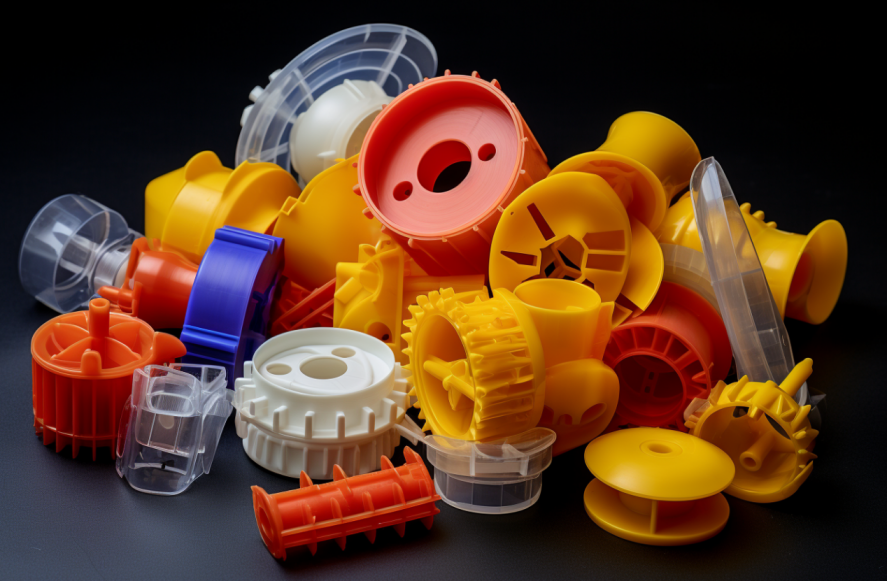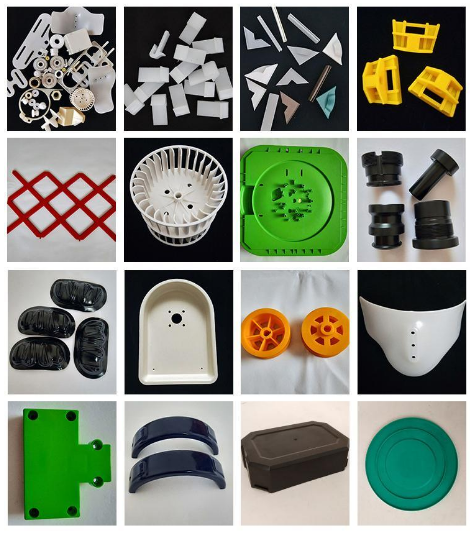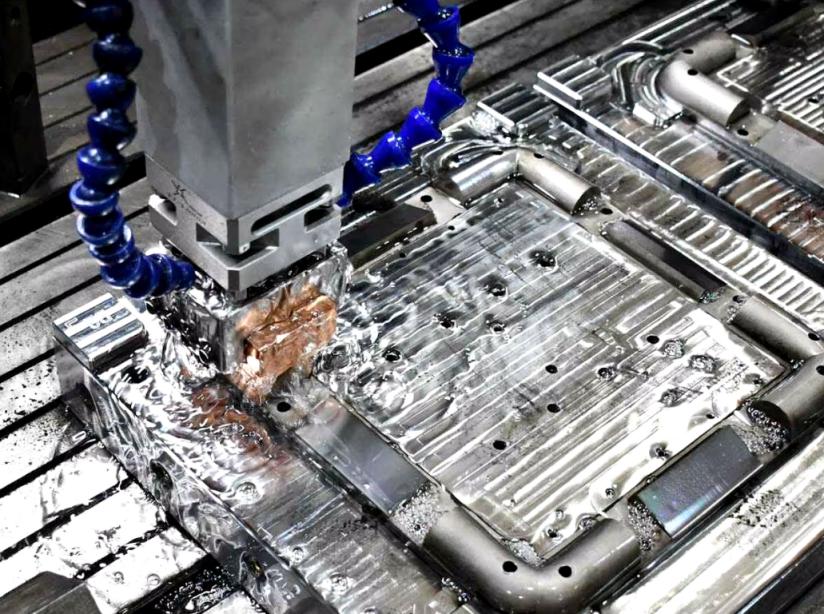Blog
We regularly update articles related to the prototyping and manufacturing industry. You’re welcome to check our previous blogs and subscribe to our newsletter.
5 Common Challenges in Plastic Product Injection Molding and How to Overcome Them
Plastic injection molding is a versatile and widely used manufacturing process. From automotive parts to precision instruments, it has become the backbone of various industries. However, the process isn’t without its challenges. Louis Machine, a professional plastic product injection molding supplier, offers insights into common issues and how to address them. This guide will explore the five most common challenges in plastic product injection molding and provide practical solutions to overcome them.

1. Warpage: Keeping Your Products in Shape
One of the most common problems in Plastic Product Injection Molding is warpage. Warpage occurs when parts cool unevenly, causing them to bend or twist. This deformation can lead to rejected products, higher costs, and wasted materials.
What Causes Warpage?
Warpage happens when different areas of the part cool at different rates. Uneven cooling causes internal stresses, leading to shrinkage in some areas and elongation in others. Factors contributing to warpage include improper mold design, material selection, and inconsistent cooling.
How to Prevent Warpage?
To prevent warpage, it’s critical to design molds that facilitate uniform cooling. At Louis Machine, we specialize in using advanced Mold Flow Analysis to predict and prevent warpage by simulating how the material flows and cools inside the mold. By using this technology, we can ensure that molds are optimized for even heat distribution, reducing the risk of deformation.
Additionally, choosing the right plastic material for your product is essential. Some plastics have higher tendencies to warp than others. Louis Machine’s well-trained engineers can help clients select the best material to reduce warpage risks.
Temperature Control is Key
Ensuring that both the mold and material temperatures are precisely controlled is another vital aspect of preventing warpage. Louis Machine uses state-of-the-art equipment to maintain strict temperature control during production, ensuring that all parts cool evenly and retain their intended shape.
2. Flash: Maintaining the Aesthetic and Functionality of Your Parts
Flash, the excess material that leaks out of the mold and forms a thin layer on the edges of the product, is a common defect in Plastic Product Injection Molding. While it may not always compromise the functionality of a part, it often affects the aesthetic quality and can require additional post-processing to remove.
Causes of Flash in Plastic Product Injection Molding
Flash is typically caused by improper mold clamping or poorly fitting mold parts. If the clamping pressure is insufficient or the mold doesn’t fit perfectly, molten plastic can escape into unwanted areas. Another potential cause is overly high injection pressure, which forces plastic into areas beyond the mold cavity.
Solutions to Eliminate Flash
Louis Machine takes a proactive approach to preventing flash by ensuring molds are perfectly aligned and clamped with the right pressure. Our use of high-end equipment such as ROEDERS, MAKINO, and SEIBU ensures precision in every stage of the process, minimizing any gaps that could lead to flash.
Adjusting injection pressure is another key solution. By carefully controlling the injection speed and pressure, we prevent plastic from forcing its way out of the mold cavity. Additionally, mold maintenance is a priority at Louis Machine, as regular cleaning and inspection reduce the likelihood of flash formation.
3. Sink Marks: Achieving a Flawless Finish
Sink marks are another common issue in Plastic Product Injection Molding, appearing as small depressions or dimples on the surface of a molded part. These marks are caused by uneven cooling or shrinkage of the material inside the mold, leading to visual and structural imperfections.
Why Sink Marks Occur
Sink marks often form when thick sections of the molded part cool slower than the thinner sections. This results in material shrinkage in the thick areas, leaving behind visible marks on the surface. Improper packing of the mold and inadequate holding pressure during the cooling process can also lead to sink marks.

Strategies to Prevent Sink Marks
At Louis Machine, we prioritize mold design to minimize the occurrence of sink marks. By incorporating uniform wall thickness into the product design, we reduce the likelihood of uneven cooling. Additionally, we use advanced Plastic Product Injection Molding techniques such as optimizing packing pressure and increasing cooling time, ensuring that the material fills the mold cavity completely and cools evenly.
Our experienced engineers can also help clients adjust the material formulation to reduce shrinkage, particularly for parts with thicker sections. This ensures a smooth, flawless finish on all products.
4. Short Shots: Ensuring Complete Part Formation
Short shots occur when the mold cavity is not completely filled, leading to incomplete parts. This can be a costly problem, as it often results in scrapped parts and wasted material.
Causes of Short Shots
Short shots are usually caused by a combination of factors, including insufficient injection pressure, low material temperature, or poor venting within the mold. When molten plastic cannot properly fill all areas of the mold cavity, the result is an incomplete part.
How to Avoid Short Shots
To avoid short shots, it’s essential to ensure that the injection pressure is set correctly. Louis Machine’s high-precision equipment allows us to adjust pressure with extreme accuracy, ensuring that enough force is applied to fully fill the mold cavity.
Additionally, maintaining optimal material temperature is crucial. At Louis Machine, we use advanced temperature control systems to keep the plastic at the right viscosity, making it easier for the material to flow into all parts of the mold. Regular mold maintenance and proper venting also ensure that air can escape, allowing for full mold filling.
5. Weld Lines: Maintaining Structural Integrity
Weld lines form when two or more flow fronts of molten plastic meet inside the mold but do not bond properly. These lines not only affect the appearance of the part but can also weaken the structure, making it prone to breakage under stress.
The Causes of Weld Lines
Weld lines occur when the molten plastic cools too quickly before the flow fronts can fully bond. This problem is often associated with parts that have multiple gates or complex designs, making it difficult for the material to maintain a uniform flow.
Solutions for Minimizing Weld Lines
At Louis Machine, we tackle weld line issues by adjusting mold temperature and injection speed. By keeping the mold temperature higher, the plastic stays molten longer, allowing the flow fronts to merge seamlessly. Our engineers also optimize gate placement and adjust injection speed to ensure smooth flow throughout the mold cavity.

Using stronger or more heat-resistant materials can also help improve weld line strength. Louis Machine’s expertise in material selection allows us to recommend the best options for achieving both aesthetic and functional quality in your products.
Conclusion: Overcoming Challenges with Louis Machine
Plastic Product Injection Molding is a complex process that requires precision and expertise to ensure high-quality products. Challenges such as warpage, flash, sink marks, short shots, and weld lines can affect the outcome of your project, but with the right strategies, these issues can be successfully mitigated.
At Louis Machine, we specialize in mold design, precision parts production, and Plastic Product Injection Molding. With our high-end equipment, experienced engineers, and strict quality control measures, we offer customized solutions to overcome common injection molding challenges. Whether you need OEM/ODM services, mold flow analysis, or fast response times, Louis Machine is your trusted partner for delivering premium, high-quality products every time.





